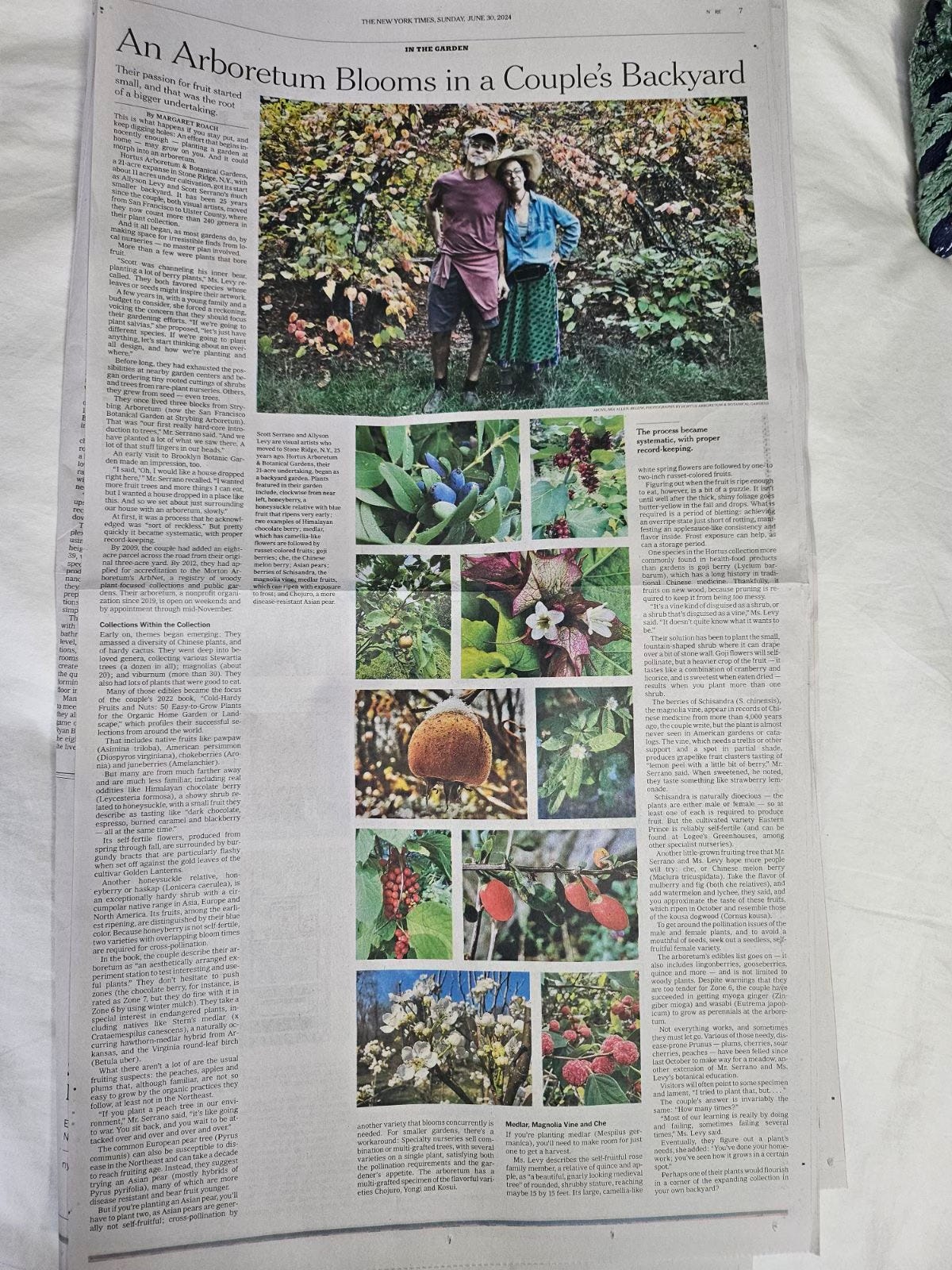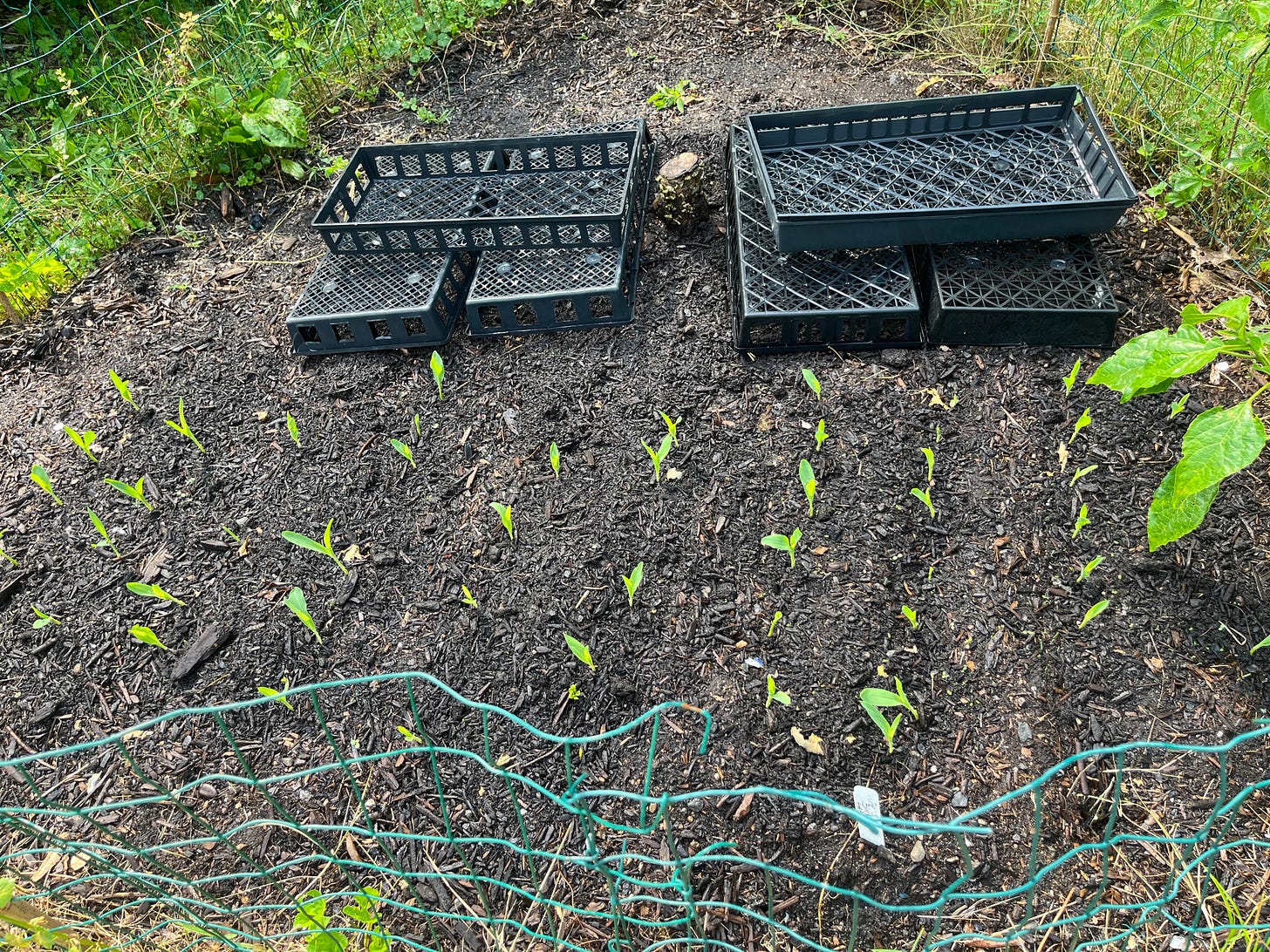London Calling...
Greetings from our UK work/play trip and other things that have been going on in June.
This post has been in my drafts folder for the past three weeks where I was writing about Spring and recapping some of the plants that were really at their finest this season. But I have been as busy as a bee as the saying goes, or more like these beetles…
Then our interview with Margaret Roach was published in the New York Times right before we left for our first ever trip to England in the middle of the gardening season!
The article came out online (which you can read here,) then in print on Sunday June 30th, for all you old-schoolers. We have also taped a second podcast with Margaret and that can be heard here. Our first podcast with Margaret was recorded 2 years ago after the release of our book, ‘Cold-Hardy Fruits and Nuts’ (can be heard here.) In this interview we discuss some of our favorite, more unusual North American fruiting plants.
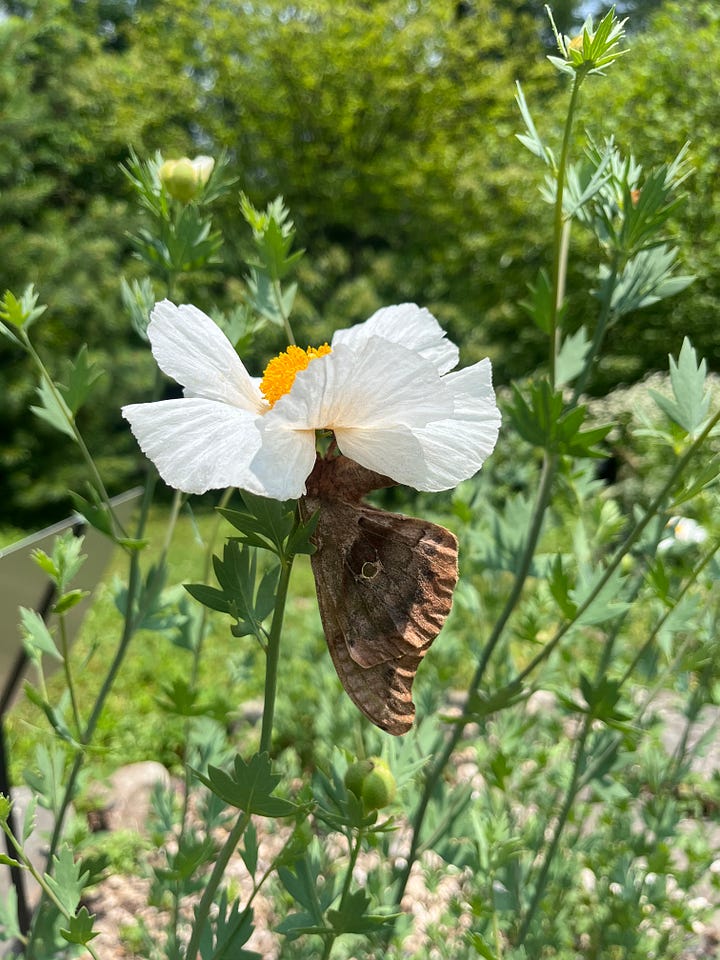
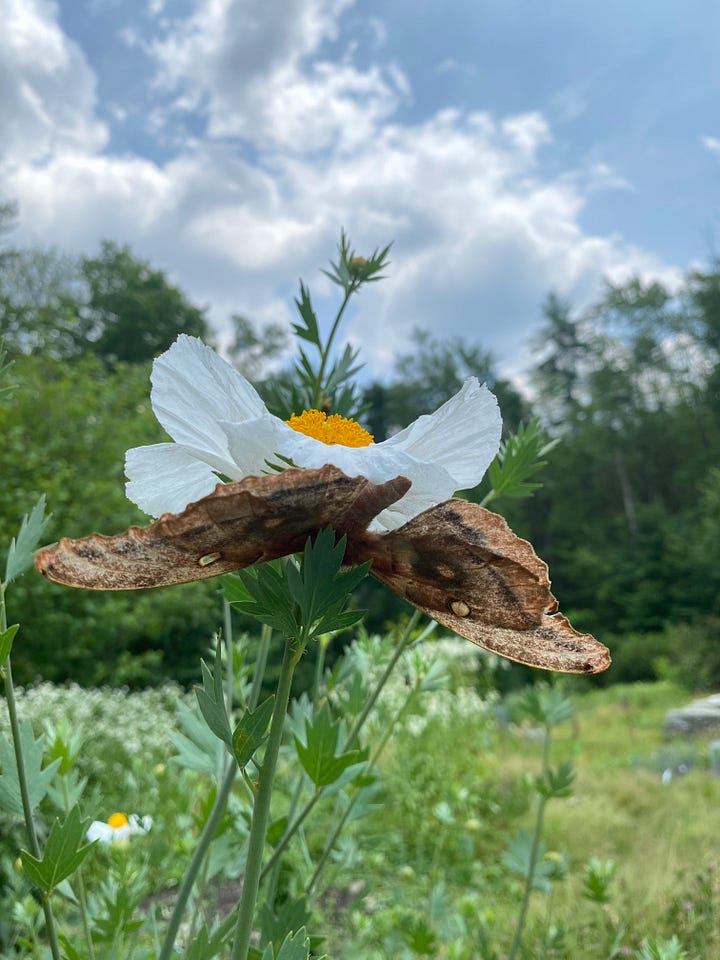
Come visit the garden if you’re in the Hudson Valley! The arboretum is open every weekend (mostly-so please visit the calendar).
Join us on July 7th for a walking tour through the gardens. The walk will involve both ornamental and edible plants.
2:00 pm-4:00 pm ~ $20
Tour size is limited so please rsvp here.
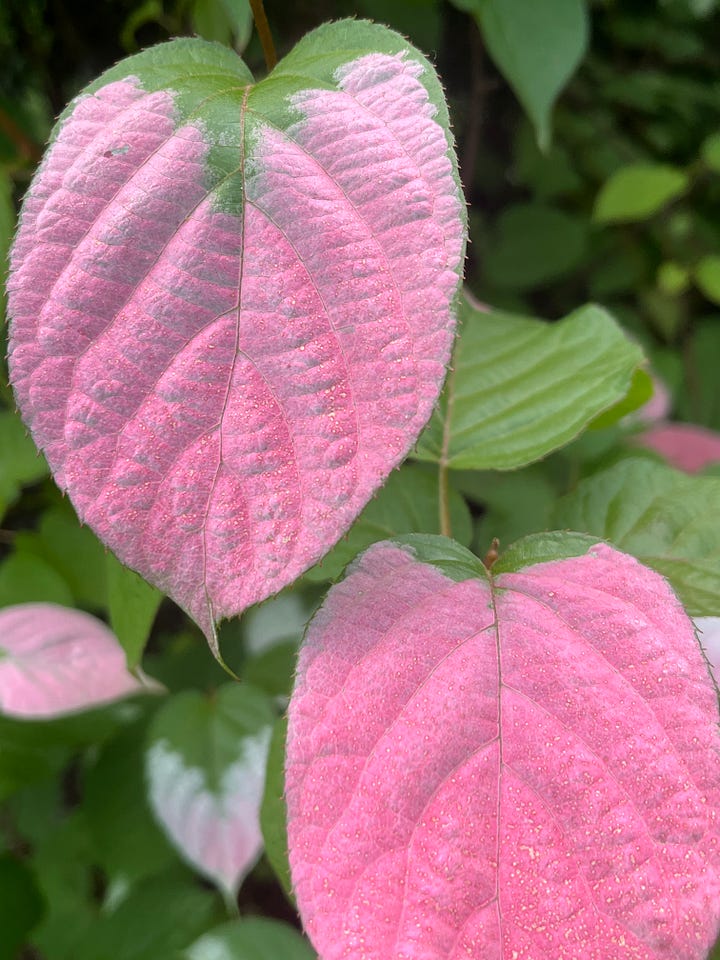
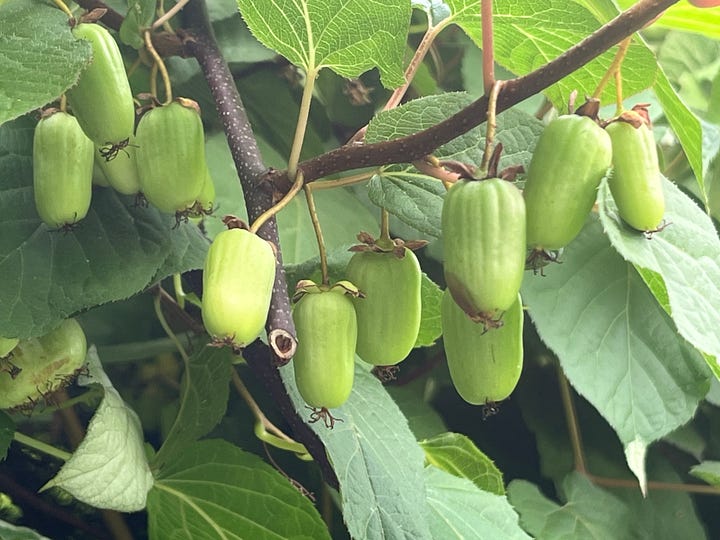
The Kiwis are ripening. Come try!! This vine which is from Northern Eurasia was first brought to Europe and the US as an ornamental vine because of its striking pinkish-red and white variegated leaves. It is only in recents decades that it is celebrated for its fruits that taste just like store bought kiwis but without the fuzz. Read more about them in our book!
SAVE THE DATE the 4th Annual “Art in the Garden Event” is July 13th (rain date 7/14). This year we will be featuring the work of Alison McNulty.
Her sculpture will be on display at the arboretum for the entire season. Please check out our website to see all the “pop-up” artist who will participate in our art in the Garden Event, as well.
Without your support we would not be able to host these talented artists for the day. Contact us to become an art sponsor!
Sergey Jivetin will be joining us once again to do his wonderful interactive seed engraving artworks with garden visitors!
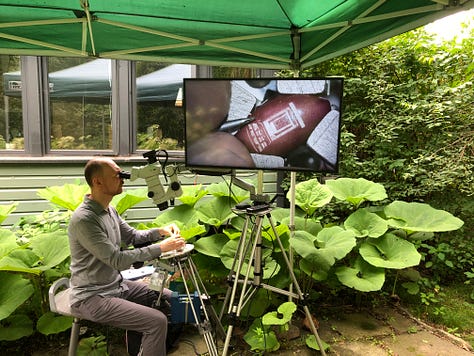
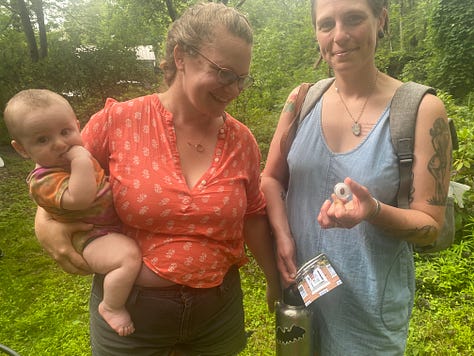
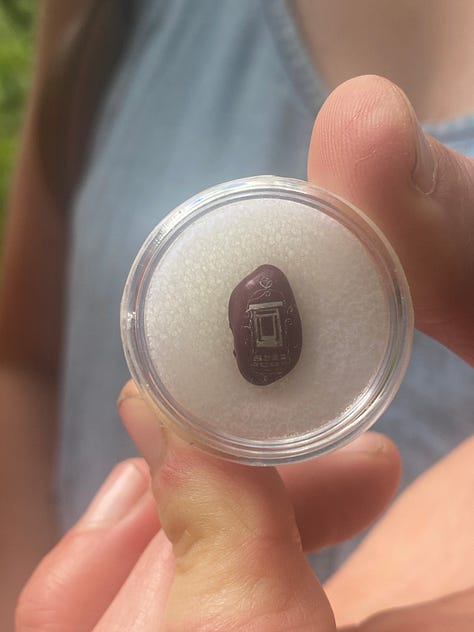
Want to have your story engraved on a seed? There are a few slots available. Sessions run approximately 45 minutes. Please contact us with your preferred times in order of preference and we will do our best to accommodate. You will need to provide the seed, and the artist requests you bring several. This is a free event and you get to take the seedy artwork home!
Available times:
12:00, 12:45, 1:30, 1:45, 2:30, 3:15
SAVE THE DATE: for few more artsy workshops at the garden!
8/24 -Eco-printing with Bonnee Pecquex
9/22 + 9/29 - Renee Baumann
These two artists will also be offering a pop-up demo’s at our “Art in the Garden Event” this year as well.
FUN FUNGUS CLASS at Hortus!
7/20 - Beginner Mushroom ID with Maria Pinto - 3:30-5:30
I started this post roughly 3 weeks ago wanting to share my thoughts on our lovely spring with mostly cool temperatures, the prerequisite amount of precipitation, and plenty of sunshine. At the arboretum we had quite the display of flowering Magnolias, Calycanthus, Chionanthus and Styrax.
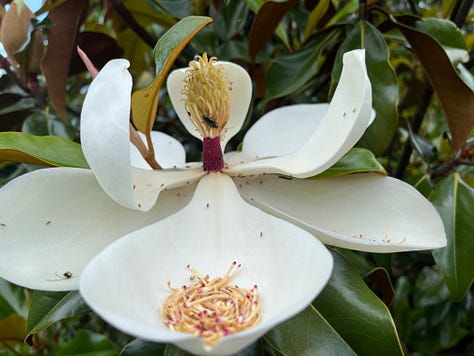
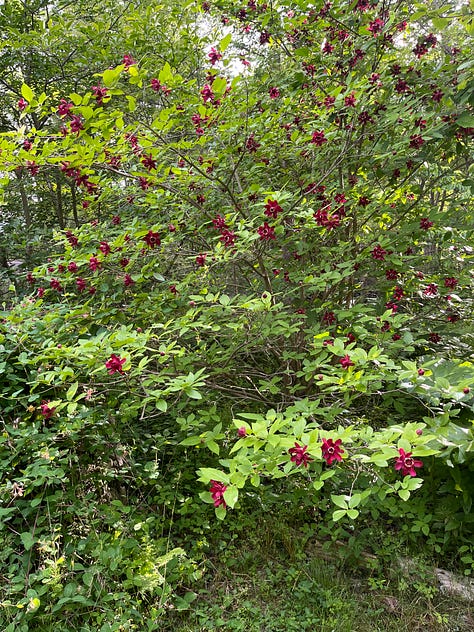
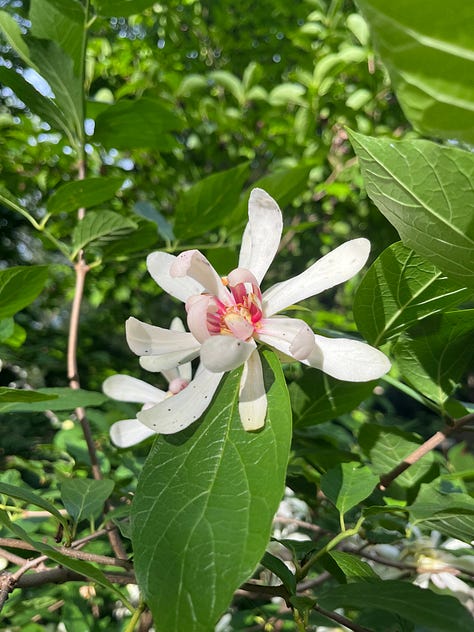
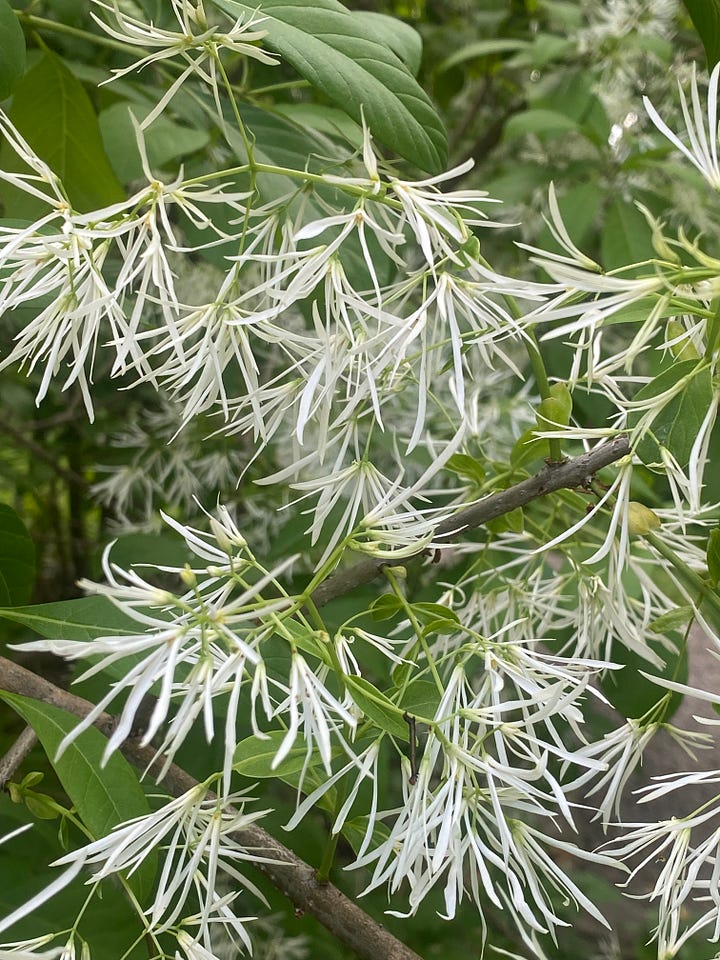
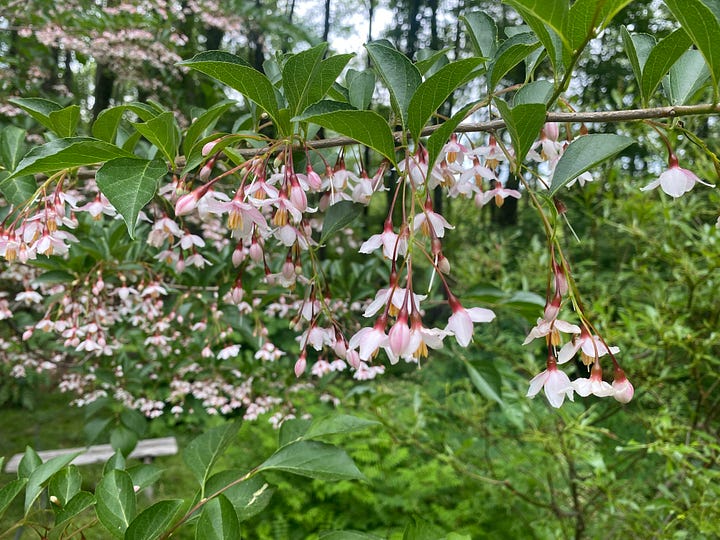
These plants flower every year, but this year the blossoms opened on the earlier side of the season which was much more floriferous than I’ve ever seen it.
Then we had a week of temperatures that hovered in the high 80’s and 90’s, and it was evident that summer had arrived regardless of the calendar date.
I’ve heard a lot of gardeners say that they are really behind in planting out their veg crop this season. I know this well. We still have many of the stars of early spring vegetable beds: beet, leek, onion and lettuce seedlings, still languished in trays. I wonder if it had anything to do with the cooler spring?? Since their growth was on the slow and paltry side I wasn’t necessarily in a panic to get them in the ground when other spring chores seemed more important. Meanwhile summer mainstay veg that I start from seed like corn was too impatient to stay in their cells, their yellow color is a warning sign to get them in the ground!
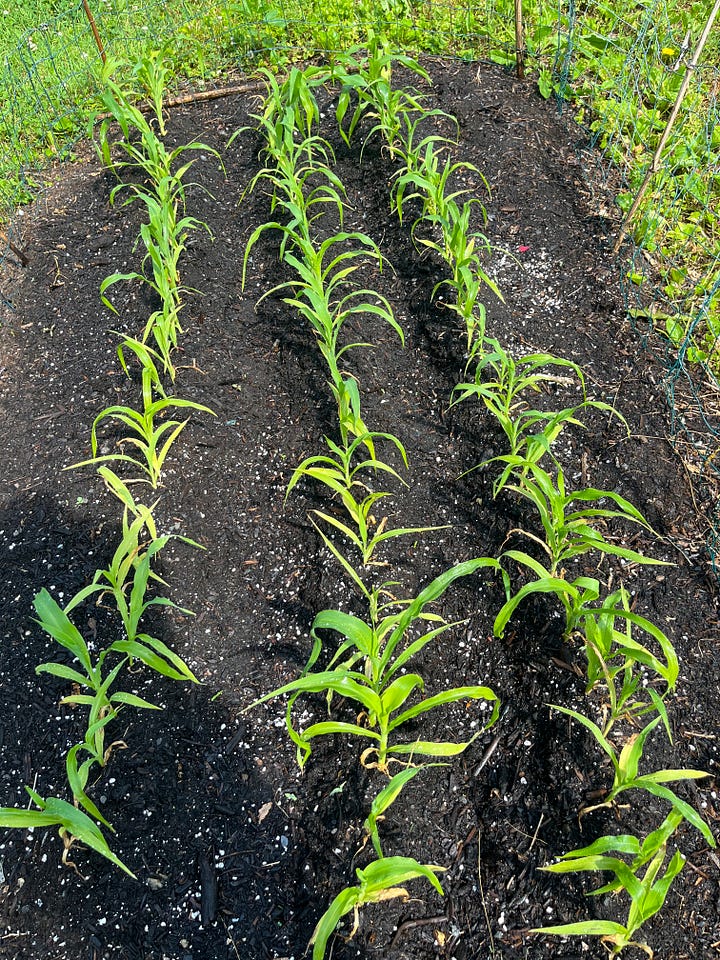
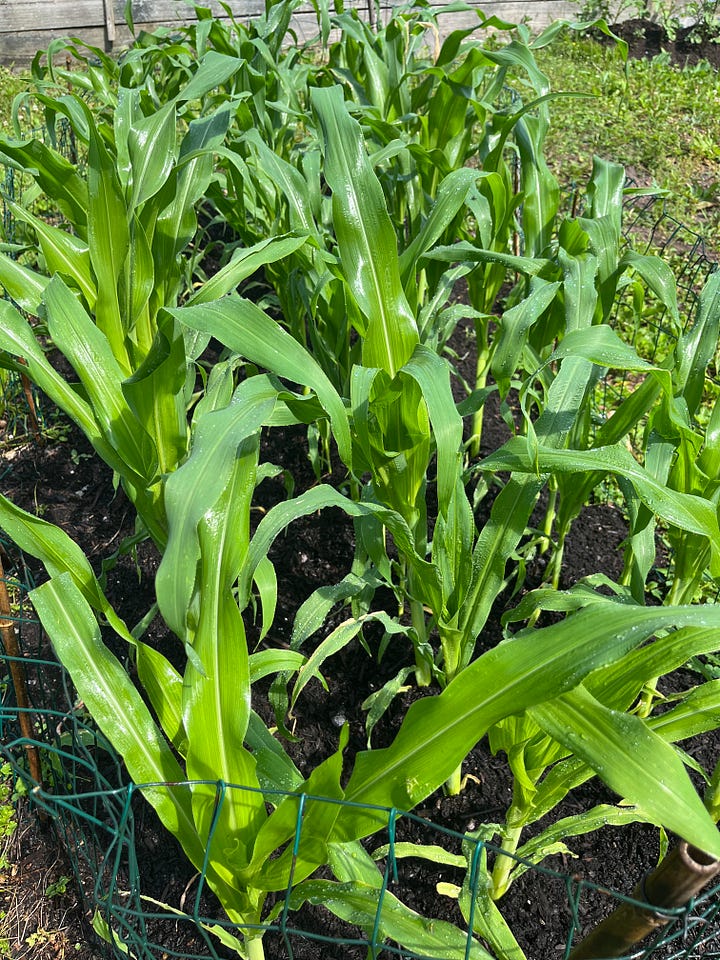
I decided to make up for my slow spring start by directly planting seed in the soil. I almost never do this based on many painful failures. Often immediately after the seeds have been tucked and firmly patted into the soil, I’m on to another garden task, then birds are all in for a fresh meal!
A strategy that sometimes works when direct sowing is to use trays to cover the buried seeds. I’ve already gone through the motions of encircling the space with 3’ deer fencing to keep it from thieving bunnies and the like..
As stated earlier I am writing this newsletter while in London having a work/play-cation. Scott and I were invited to speak at Groundswell Regenerative Agricultural Festival which was an amazingly large fair located at Lannock Mannor Farm that welcomed around 8,000 visitors over two days. With over 300 speakers, this was a BIG event, which provides a forum for farmers, growers, or anyone interested in food production and the environment to learn about the theory and practical applications of regenerative farming systems.
Contact us if you have an event that you would like us to speak at.
We’ve been to Kew Gardens twice on this trip, and it’s possible that we’ll go one more time…with over 300 acres, there’s a lot to see. Gardeners do not get to see a world-wide collection of trees that are hundreds of years old, every day.
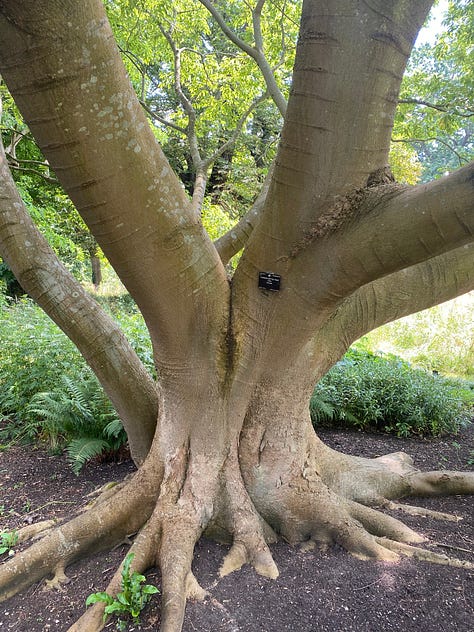
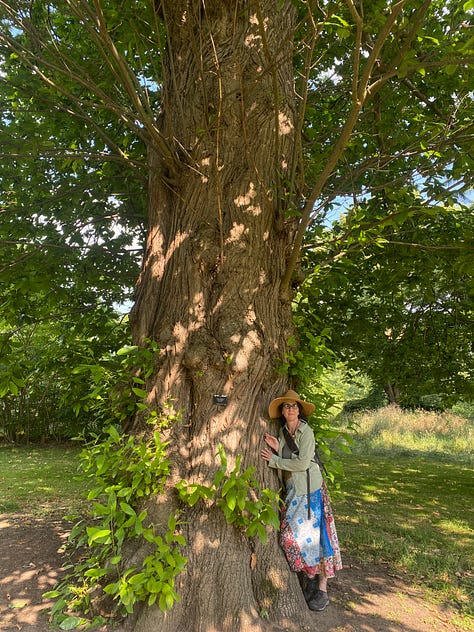
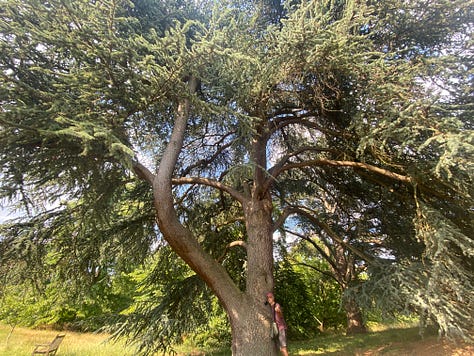
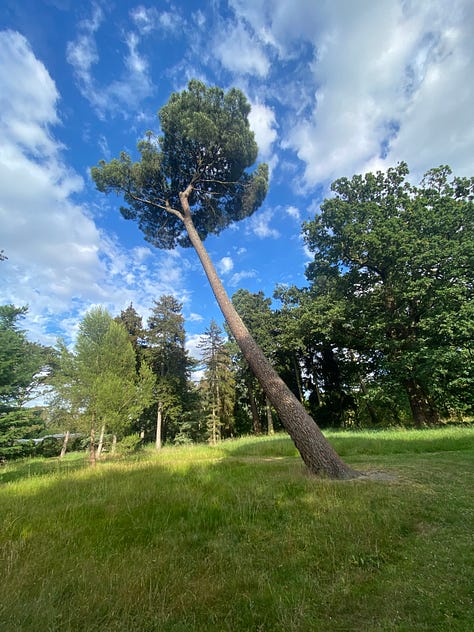
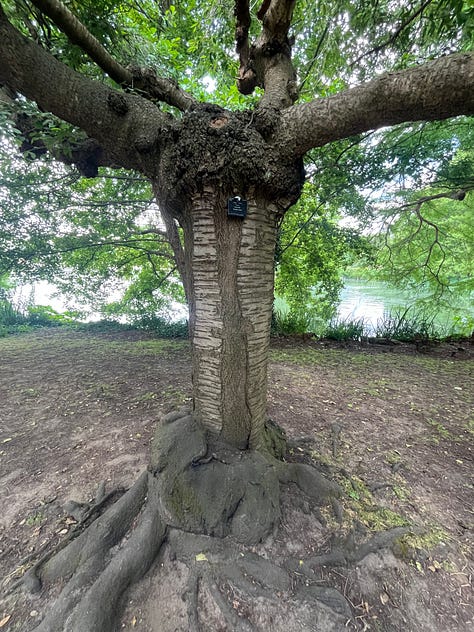
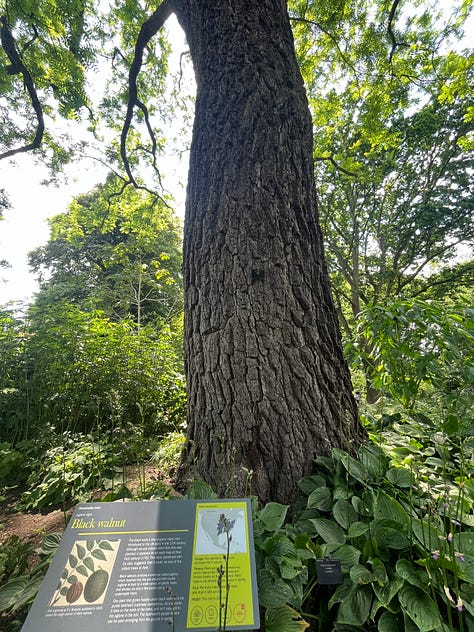
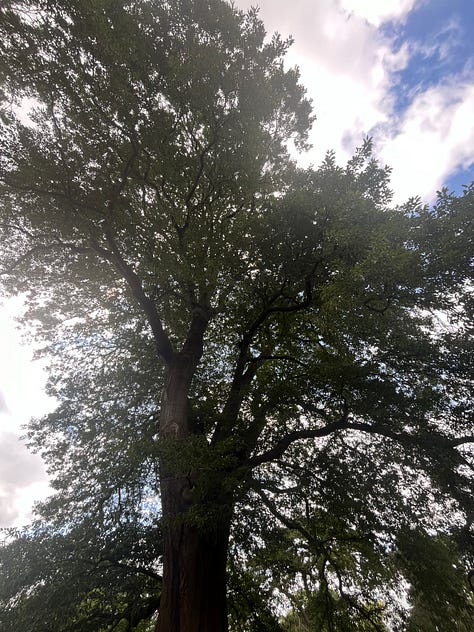
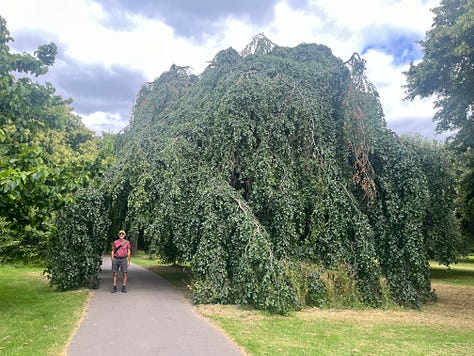
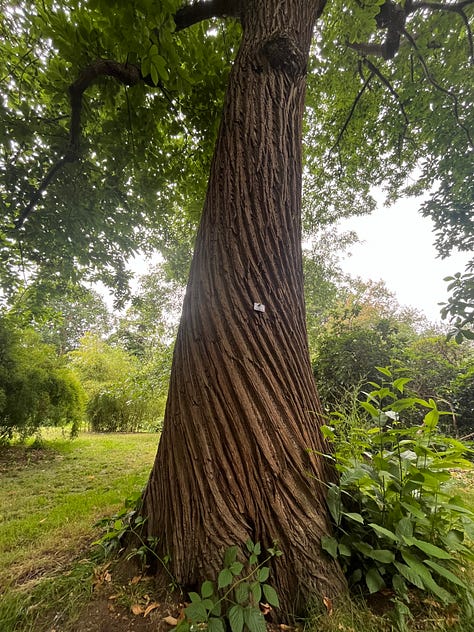
Kew Garden is over 250 years old and was founded by the Princess of Wales, Augusta established a garden for exotic plants in 1759 and made a nine acre botanic garden within the pleasure grounds at Kew. Read more about the Royal Botanic Gardens at Kew and its history.
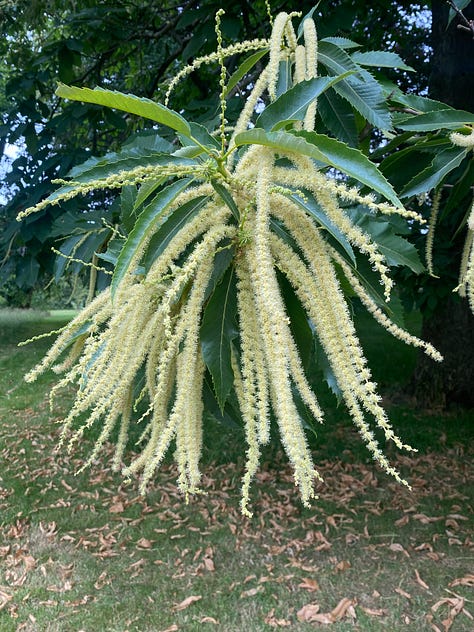

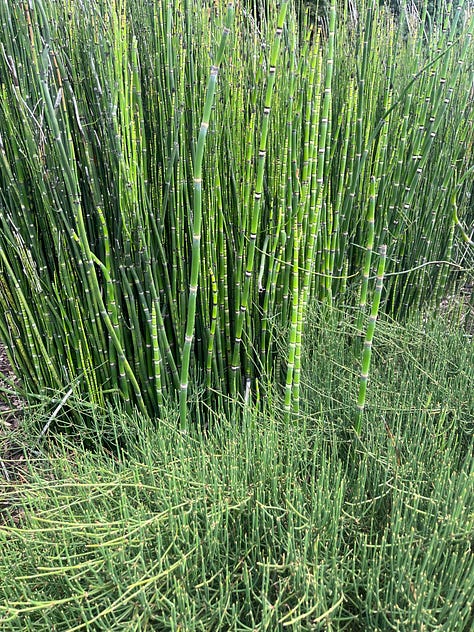

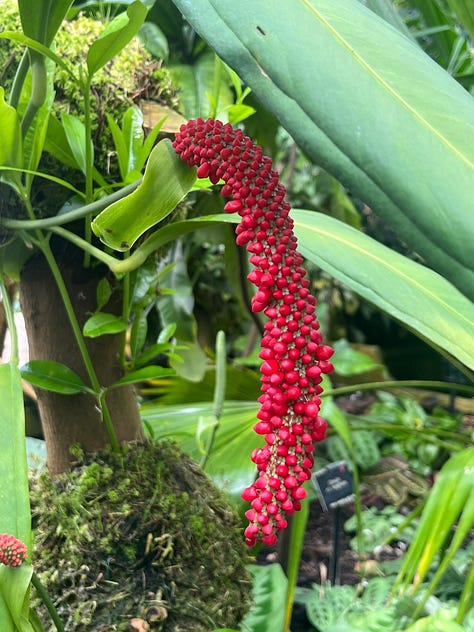
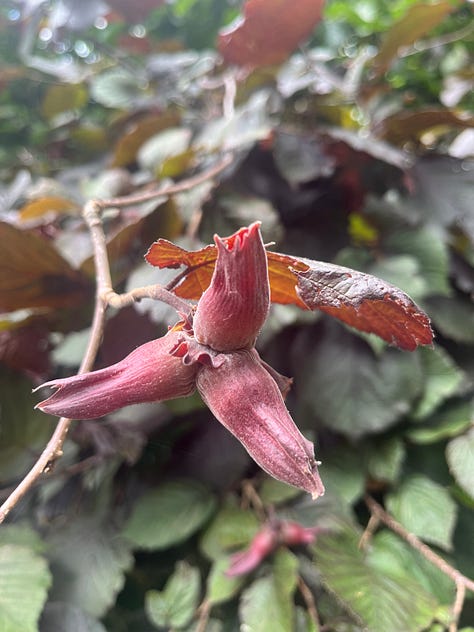
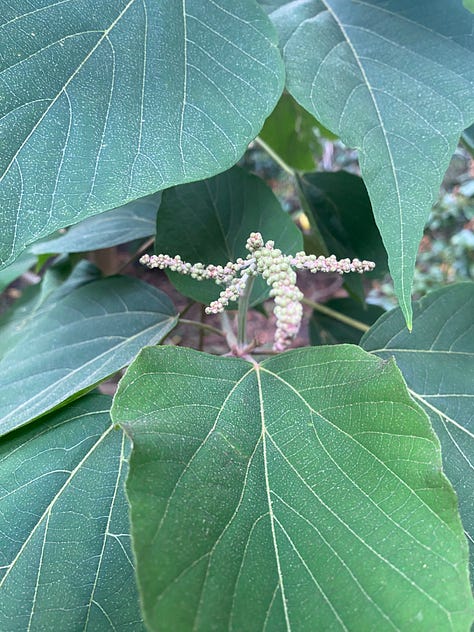
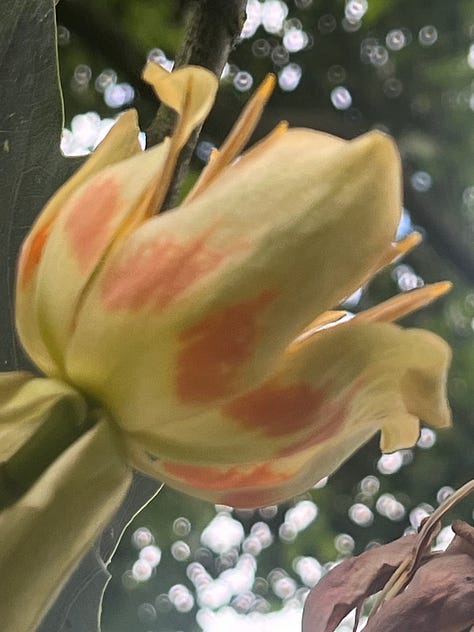
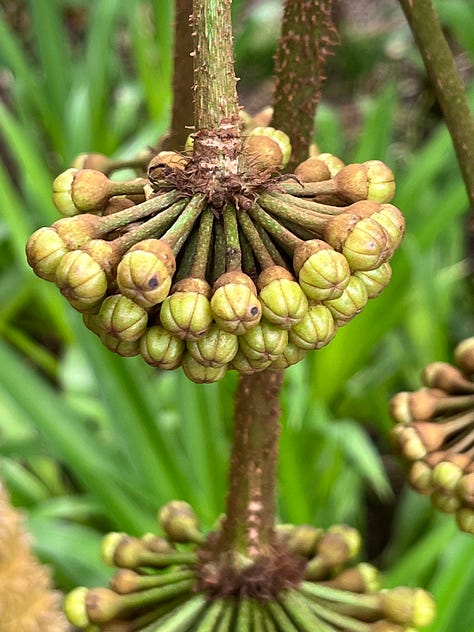
Thanks for travelling with me!




